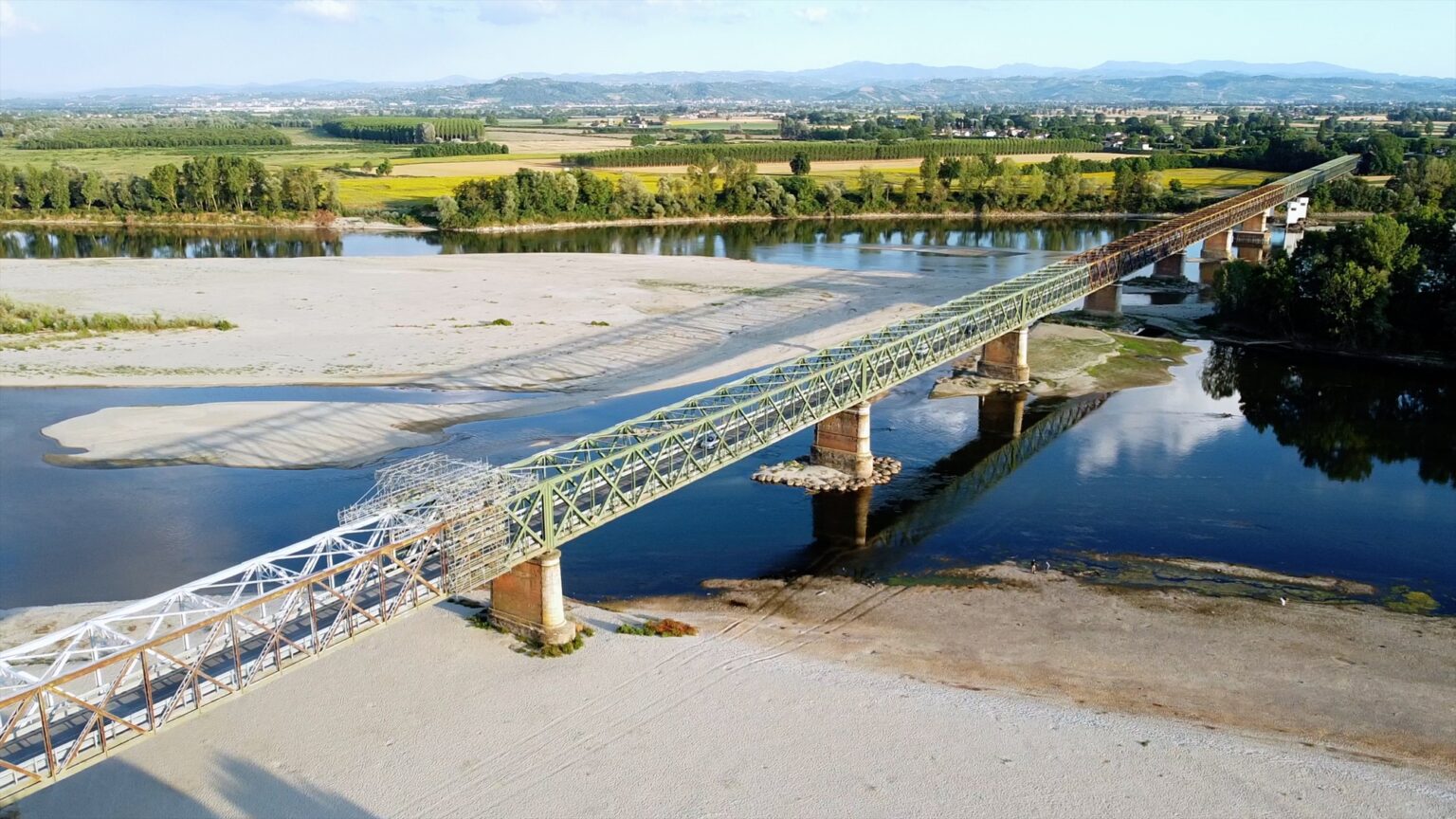Climate change is raising average global temperatures, reducing winter rainfall, and drying up rivers. It is an environmental problem common to many countries, but one that risks becoming a diplomatic crisis when water resources are shared between different states.
By now, it should be an established concept, like those summarised in popular proverbs such as “one swallow does not make a summer”: the latest unseasonal, sometimes disastrous rains no longer fool anyone, the planet is warming up, winter rainfall is decreasing and, as a consequence, rivers and lakes are also tending to dry up drastically. The effects on the water supply of entire regions are well known and even obvious.
Drought in Italy
In Italy, the valley through which Italy’s largest river, the Po, flows suffers. The entire Po valley is suffering, but especially the areas where crops require the most water: the rice paddies. “Risotto crisis” was the headline a few months ago in an extensive report in the British newspaper The Guardian from the region that continues to be one of the largest rice producers in Europe, where ‘Bella ciao’ was born, the song that before entering, rearranged, into the soundtracks and discotheques of half the world, had belonged to the partisans and, before that, to the mondine ‘curve a lavorar’ (curve to wash). And things are no better in regions where water supply has always been complex and required strokes of engineering genius, such as the Acquedotto Pugliese, which collects water from Campania and Basilicata to bring it to arid Apulia.
But the Acquedotto Pugliese plants only cross regional borders within Italy to bring the water that thirsty Apulia needs. What happens when the water is within pipeline reach, but the river crosses one or more state borders? If water becomes scarce, a diplomatic crisis can ensue. This happens to the Tago, which the Spanish call the Tajo and the Portuguese call the Tejo. It is the largest river in the Iberian Peninsula and one of the longest in central-western Europe; it rises in Spain, in the Sierra de Albarracín, and flows into the Atlantic. Once again, the wide, deep estuary that can be admired from the squares and viewpoints of Lisbon risks being misleading. The Tagus is dying. The Spanish newspaper El País filmed it from a drone a few years ago and x-rayed its worrying state of health
“River battle” between Portugal and Spain
The other rivers whose waters are shared by Spain and Portugal are no better off. The problem is an old one, and in 1998 the two countries signed an agreement in the Portuguese city of Albufeira, which came into force in 2000, defining water flows. In 2008, an additional protocol to this agreement was necessary, approving and signing a new flow regime. The problem is easy to understand, difficult to solve. But if the Spanish government enforces the agreements and orders the dams to be opened, it is the Spanish farmers who protest. But if the Spanish government enforces the agreements and orders the dams to be opened, it is the Spanish farmers who protest. In 2022, at the end of a difficult summer of rationing on both sides of the border, thousands of people took to the streets in the regions of León, Zamora, and Salamanca to protest against the Madrid government for letting water, the quintessential symbol of the common good, become increasingly scarce.
Strategic choices upstream do not help, because once a whole economic scaffolding has been set up around a certain type of business, it is very difficult to dismantle it and do it again. Golf-centred tourism, for example, is all water stolen from agriculture. In the Algarve region, Portugal’s thin southern coastal strip closest to the Mediterranean, there are some 40 golf courses, and work is underway to ensure that by 2025 at least half of them can be irrigated by recycling wastewater. But in Portugal, meanwhile, avocados in toast and salads have also become fashionable, and the Algarve has begun to grow them intensively, as a Reuters report a few years ago reported, quadrupling the region’s water needs compared to traditional orange groves. A little further afield is the Spanish province of Huelva, the world’s largest exporter of strawberries. Its red berries dry up local wells, but fill the aisles of German supermarkets, inspire signature collections in Germany among guilt-ridden consumers and legislative battles in Spain to authorise new wells. Battles in which political forces are regularly at stake in regional elections.
Between Spain and Portugal, the latest news is that the respective environment ministries have instructed the administrations of both countries to prepare an agreement on the exploitation of water from the Tagus and Guadiana rivers. The announcement is recent and came on the sidelines of the latest summit between EU energy ministers. It is therefore likely that an additional protocol will be negotiated on top of the 2000 agreement. New needs are added, and old resources are subtracted.
Complementary activity
Activity 1 – Do you know where the water that comes out of the taps in your house comes from? Do a search.



